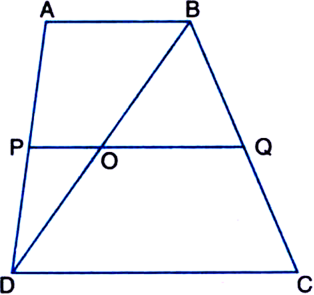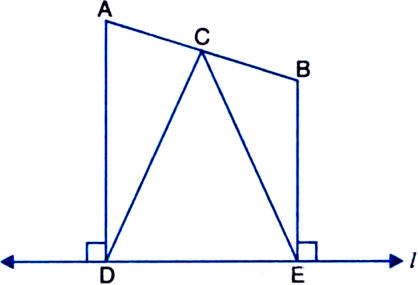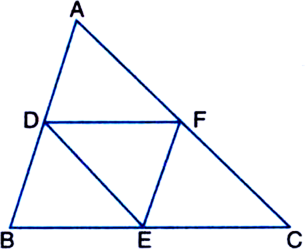 Long Answer Type
Long Answer Type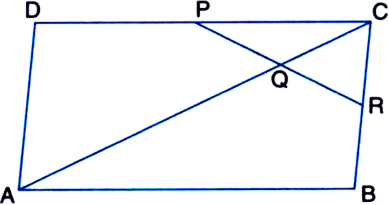
Given: ABCD is a trapezium. P and Q are the mid-points of the diagonals AC and BD respectively.
To Prove: PQ || AB
Construction: Join DP and produce so as to meet AB in R.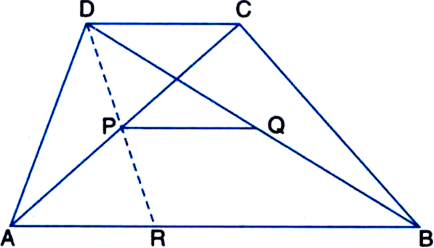
Proof: In ∆APR and ∆CPD,
∠PAR = ∠PCD
| Alternate interior angels [∵ AB || DC and a transversal AC intersects them]
∠APR = ∠CPD
| Vertically opposite angles
AP = CP | Common
∴ ∆APR ≅ ∆CPD
| ASA congruence rule
∴ PR = PD | CPCT
Now, in ∆DRB,
∵ P is the mid-point of DR | Proved above and Q is the mid-point of BD |Given
∴ PQ || AB
Line segment joining the mid-points of any two sides of a triangle is parallel to the third side
But AB || DC
∴ PQ || AB || DC
 Short Answer Type
Short Answer Type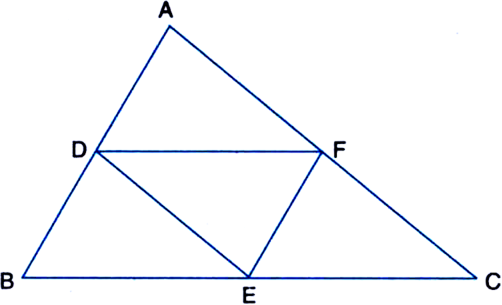
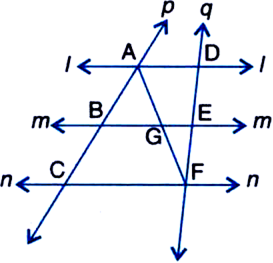
Points A and B are on the same side of a line l. AD and BE are perpendiculars to I, meeting at D and E respectively. C is the mid-point of AB. Prove that CD = CE
[Hint: From C draw the perpendicular CM on l.]
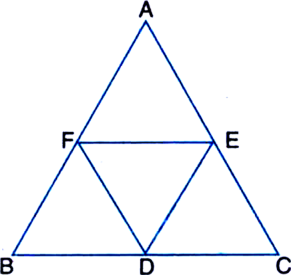
P is the mid-point of side AB of a parallelogram ABCD. A line through B parallel to PD meets DC at Q and AD produced at R (see figure). Prove that
(i) AR = 2 BC
(ii) BR = 2 BQ.
